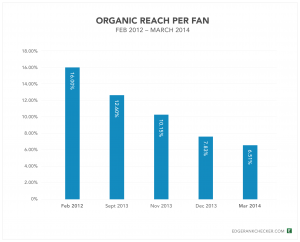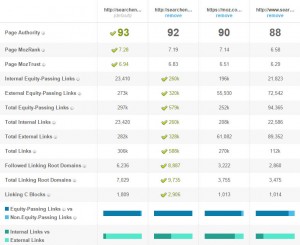 2014 is now a memory, so it’s time to reflect on what we’ve learned and solidify our new year’s resolutions for 2015.
2014 is now a memory, so it’s time to reflect on what we’ve learned and solidify our new year’s resolutions for 2015.
At the top of my list (right behind “getting more exercise” and “taking more family trips”) is “get clients to increase their focus on skills-based volunteering.”
Why? Well, for one thing, I’m convinced that skills giving will save the world.
That’s all.
Here’s why:
In the past, creating economic value was purely the domain of corporations, while social value creation was left to nonprofits. And never the two shall meet.
But what we’ve all learned is that when corporations and nonprofits work together – combining the unique ability that companies have to leverage capital with the ability of nonprofits to address social problems – we create something new. It’s called shared value.
A slightly confusing name for a very powerful idea.
The magic of shared value is scale. We can finally get solutions at the scale that is required to actually solve those problems.
In an age of almost complete transparency, doing good is critical if you want to keep your license to do business. Consumers hesitate to buy from you, but worse, employees won’t even apply to your company. How could they? Everyone has 600 friends to report to now. “Why are you working for that jerk company”, they’ll say. Studies show this is true; Millennials would rather stay home than work for a selfish corporation that doesn’t care about doing good. It’s just too humiliating.
And here’s the opportunity: according to the Taproot Foundation, nonprofits only have about 3% of the services that they really need. Not cash; services. That is, things like strategic planning, accounting, design, advertising, marketing – things that help them scale. Nonprofits simply don’t have those.
But corporations do.
Now if corporations can provide those services in the form of skills-based volunteering, we can start to fill that gap. We can start to apply some of the talent that corporations have locked up in their four walls to the service of social value creation.
Studies show that standard volunteering is worth $ 22.14 per hour to nonprofits. If you contribute skills to a nonprofit, however, the value literally skyrockets. In these instances, the value of one person’s skilled service can range from something relatively modest to hundreds of dollars an hour.
What’s interesting and why this is so exciting is that this form of corporate volunteerism benefits the corporation too. And not just a little – a lot.
Turns out skills-based volunteering is the cheapest form of workforce skills development, at about one-third of the cost of traditional development programs. According to a study by human resources think tank Bersin and Associates, the average training cost per employee is $ 1200, with most of that money going towards developing soft skills such as management and leadership abilities. But Points of Light Institute found that a company will spend about $ 416 on each person that participates in a corporate volunteer program, which can help train employees in these same sorts of management and leadership skills. That’s quite a savings.
This ties economic incentive to social value creation.
I’m seeing this on display with so many companies. According to CECP’s 2014 Giving in Numbers report, the number of businesses that have some kind of pro bono program has increased from 30% to just over 50% in six years. Making it the fastest growing trend in corporate employee engagement.
Canadian energy company Emera gets this. Through their Good Neighbour program, they offer grants to the local organizations where their employees are providing skills to support nonprofit programs. Employees serve on boards, help fundraise and serve as mentors and youth leaders. Emera then makes a financial contribution to the organization as an acknowledgement of the effort their employees have made towards that charity.
Skills-stretching happens whenever there is skills-based volunteering. An Emera assistant has been able to gain gain communications and PR skills as a member of the fundraising committee for Resource Center for the Arts. An employee from Emera’s customer services department gained HR skills by overseeing the HR process of an annual arts festival.
Or take Kenneth Cole. The company has long recognized the value of donating their skills to organizations. They not only provide the talent of their staff but also provide grants and mentoring, and ultimately access to their distribution to social entrepreneurs in fashion, especially where it benefits small artisans. This helps launch companies they can potentially acquire in the future, as well as products to sell, and talented and trained employees to hire. Kenneth Cole is so actively applying SBV that they don’t just help organizations, they make brand new ones.
Finally, Neiman Marcus is bringing this exciting trend full circle by tying SBV to performance reviews. It’s early for them, but employees are asked to talk about how volunteerism benefitted them during the course of the year. Tying volunteerism to performance will increase the frequency and quality of this form of corporate philanthropy.
What I observed in 2014 was a burgeoning enthusiasm for skills-based volunteering in companies from all sectors, all sizes, everywhere. I can tell you there is not a single corporation i’ve spoken to in the last six months that is not planning on instituting a program like this.
I think that only when you demonstrate economic incentive to creating social value will we be able to reach the scale we need to solve our problems. I’m honored to be a part of helping enable companies to craft and execute these programs.
I believe that by leveraging the power of capitalism in the service of causes and stretching the skills of your employees, we will see a historic shift to a world where ultimately, businesses will compete with each other not only to make the most profit, but do the most good.
That’s the world we’re working toward in 2015.
Happy new year, everyone.
Digital & Social Articles on Business 2 Community
(238)








